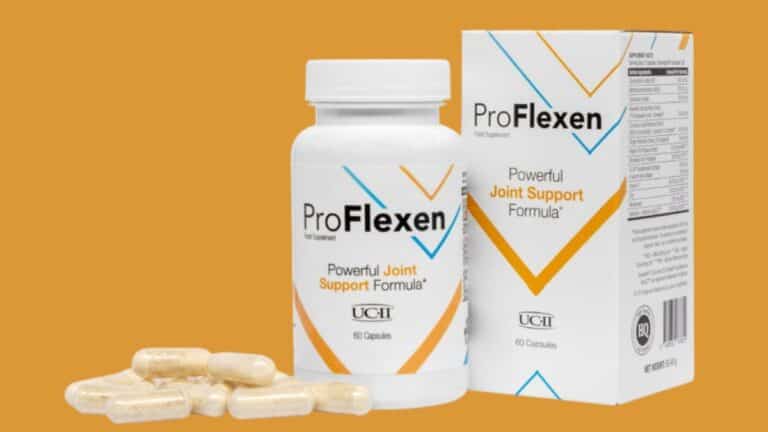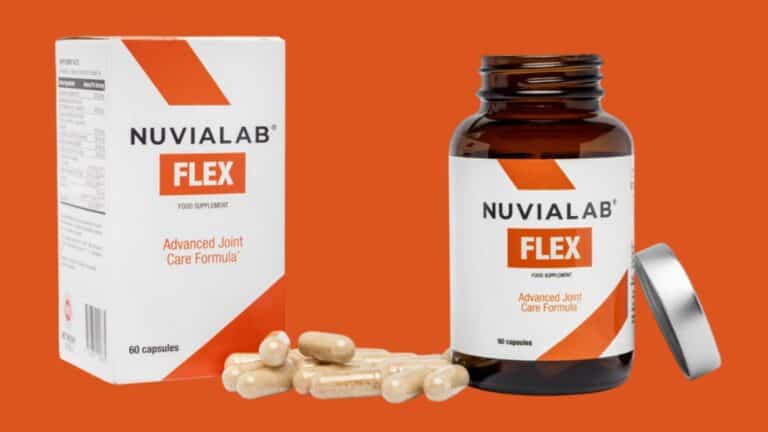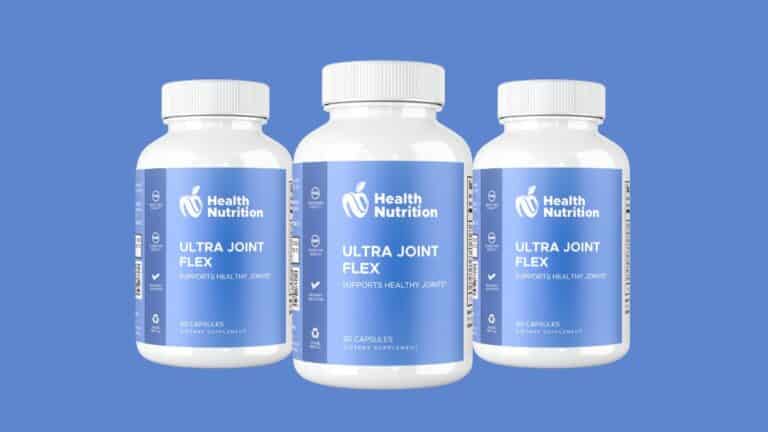In the quest for weight loss and a leaner physique, fat burners have gained significant popularity as dietary supplements. These products are often marketed with promises of quick and easy fat loss, making them an attractive option for many individuals striving to shed excess weight. Fat burners typically contain ingredients that claim to boost metabolism, increase energy levels, and enhance fat oxidation, offering a potential edge in the battle against body fat.
However, while fat burners can be a helpful addition to a comprehensive weight loss plan, it is crucial to approach them with a clear understanding of their capabilities and limitations. They are not magical solutions that can replace a healthy diet and regular exercise. Instead, they should be viewed as supplementary tools that can support your weight loss efforts when used correctly. Recognizing the realities and setting realistic expectations is essential to effectively and safely incorporate fat burners into your fitness regimen.
What Are Fat Burners?

Definition and Function of Fat Burners
Fat burners are dietary supplements designed to assist in weight loss by enhancing the body’s ability to burn fat. They work through various mechanisms, such as increasing metabolism, boosting energy levels, and promoting fat oxidation. While they can provide a helpful boost in your weight loss journey, they are most effective when combined with a balanced diet and regular exercise. Fat burners can help improve the efficiency of your weight loss efforts by supporting the body’s natural processes.
Common Ingredients in Fat Burners
Fat burners contain a variety of ingredients, each contributing to their overall effectiveness. Here are some of the most common ingredients found in fat burners:
- Caffeine: A well-known stimulant that increases metabolism and helps the body use fat for fuel. It also provides energy for workouts and suppresses appetite.
- Green Tea Extract: Contains catechins, which have been shown to activate thermogenic fat-burning activity. Green tea extract can enhance fat oxidation, especially when combined with caffeine.
- L-Carnitine: An amino acid that helps transport fatty acids into the mitochondria, where they are burned for energy. It can support fat loss and improve exercise performance.
- CLA (Conjugated Linoleic Acid): A naturally occurring fatty acid that has been shown to reduce body fat while preserving muscle mass. CLA can enhance the body’s ability to burn fat and improve overall body composition.
- Yohimbine: Derived from the bark of the yohimbe tree, this stimulant can increase fat loss by enhancing the breakdown of fat cells. However, it can cause jitteriness and anxiety in some individuals.
- Garcinia Cambogia: An acidic fruit extract that is believed to suppress appetite and inhibit fat production. It is a caffeine-free option that can help control cravings and support weight loss efforts.
How Fat Burners Work

Mechanism of Action
Fat burners function through several key mechanisms to enhance fat loss:
- Increasing Metabolism: Many fat burners contain ingredients like caffeine and green tea extract that stimulate the central nervous system, leading to an increase in metabolic rate. A higher metabolism means your body burns more calories at rest, which can contribute to weight loss.
- Energy Expenditure: Ingredients in fat burners can boost energy levels, allowing you to engage in more intense and prolonged physical activity. This increase in energy expenditure helps burn more calories and fat.
- Fat Oxidation: Fat burners often contain compounds that enhance the body’s ability to break down fatty acids stored in fat cells. These fatty acids are then transported to the mitochondria, the powerhouses of cells, where they are burned for energy. This process is known as fat oxidation.
Role of Diet and Exercise in Conjunction with Fat Burners
While fat burners can provide an additional edge in the weight loss process, they are not a substitute for a healthy diet and regular exercise. A balanced diet rich in whole foods and appropriate portion sizes is essential to create the caloric deficit needed for weight loss. Regular exercise, including both cardiovascular and strength training, is crucial to burn calories, build muscle, and improve overall fitness.
Fat burners are most effective when used as part of a comprehensive weight loss plan that includes a nutritious diet and consistent physical activity. They can help enhance the results of your efforts by providing additional energy, increasing metabolism, and promoting fat oxidation, but they cannot compensate for poor dietary choices or a sedentary lifestyle.
Explanation of Thermogenesis and Its Benefits
Thermogenesis is the process by which the body generates heat. It is a key component of the metabolic process and plays a significant role in regulating body weight. Fat burners often contain ingredients that stimulate thermogenesis, leading to several benefits:
- Increased Calorie Burn: Thermogenic compounds raise the body’s core temperature, which in turn increases the number of calories burned throughout the day. This helps create a greater caloric deficit, essential for weight loss.
- Enhanced Fat Loss: By promoting the breakdown of fat cells and increasing the body’s ability to use fat as an energy source, thermogenic fat burners can enhance fat loss. This is particularly beneficial during exercise when the demand for energy is higher.
- Appetite Suppression: Some thermogenic ingredients, such as caffeine, can also help suppress appetite, reducing overall caloric intake and making it easier to stick to a healthy eating plan.
In summary, thermogenesis is a valuable process in the context of weight loss, as it helps increase calorie burn, promote fat oxidation, and support appetite control. When combined with a balanced diet and regular exercise, thermogenic fat burners can contribute to more effective and sustainable weight loss.
Effectiveness of Fat Burners

Setting Realistic Expectations for Fat Loss
Fat burners can support weight loss efforts, but it’s important to set realistic expectations. They are not magic pills that will melt away fat effortlessly. The primary role of fat burners is to enhance the effects of a healthy diet and exercise regimen. With their help, you might see an increase in the rate of fat loss, but expecting dramatic changes overnight can lead to disappointment.
Realistic goals should include:
- Gradual Weight Loss: Aim for a steady and sustainable weight loss of 1-3 pounds per week. This rate is considered safe and achievable for most people.
- Incremental Progress: Track progress in small, manageable increments, such as weekly or monthly goals, rather than daily changes. This approach helps maintain motivation and prevents frustration.
- Understanding Limitations: Recognize that fat burners can help with energy levels, metabolism, and fat oxidation, but they cannot replace the foundational elements of weight loss: diet and exercise.
Importance of a Holistic Approach (Diet, Exercise, Supplements)
A comprehensive weight loss strategy involves more than just taking fat burners. For the best results, incorporate the following elements:
- Balanced Diet: Focus on a nutrient-dense diet that includes a variety of whole foods such as lean proteins, vegetables, fruits, whole grains, and healthy fats. Monitor portion sizes and maintain a caloric deficit to promote fat loss.
- Regular Exercise: Engage in a mix of cardiovascular exercises and strength training. Cardio helps burn calories and improve cardiovascular health, while strength training preserves muscle mass and boosts metabolism.
- Adequate Hydration and Sleep: Ensure you are well-hydrated and getting sufficient sleep, as both play crucial roles in weight management and overall health.
- Mindful Supplement Use: Use fat burners as a supplementary tool rather than the central component of your weight loss plan. Choose products with proven ingredients and follow the recommended dosages.
Safe Rates of Fat Loss and Avoiding Muscle Loss
While it may be tempting to aim for rapid weight loss, it’s essential to prioritize safety and long-term health. Here are some guidelines:
- Safe Rates of Fat Loss: Losing 1-3 pounds per week is considered safe for most individuals. Occasionally, a rate of up to 4 pounds per week may be achieved, but this is not sustainable long-term.
- Avoiding Muscle Loss: Rapid weight loss can result in the loss of lean muscle mass, which is counterproductive as muscle is metabolically active and supports overall fitness. To avoid muscle loss:
- Incorporate Strength Training: Engage in regular resistance exercises to maintain and build muscle mass.
- Consume Adequate Protein: Ensure your diet includes sufficient protein to support muscle repair and growth. Aim for at least 0.8 grams of protein per pound of body weight per day.
- Monitor Caloric Intake: Avoid extremely low-calorie diets that can lead to muscle catabolism. Instead, maintain a moderate caloric deficit that supports gradual fat loss while preserving muscle.
By setting realistic expectations, adopting a holistic approach, and prioritizing safe rates of fat loss, you can effectively and sustainably achieve your weight loss goals while minimizing the risk of muscle loss. Fat burners can be a useful tool in this process, but they work best when integrated into a well-rounded health and fitness plan.
Safe Usage of Fat Burners

Guidelines for Safe Consumption
To ensure the safe and effective use of fat burners, follow these guidelines:
- Read the Label: Always read and follow the manufacturer’s instructions on the product label. This includes recommended dosages, timing, and any warnings or contraindications.
- Consult a Professional: Before starting any supplement, consult with a healthcare provider, especially if you have any underlying health conditions or are taking other medications.
- Stay Hydrated: Fat burners, particularly those containing stimulants, can increase water loss. Drink plenty of water throughout the day to stay hydrated.
- Avoid Overuse: More is not always better. Stick to the recommended dosage and avoid taking multiple fat burner products simultaneously.
- Monitor Your Body: Pay attention to how your body responds. If you experience any adverse effects, discontinue use and consult a healthcare professional.
Importance of Cycling Fat Burners to Avoid Tolerance Buildup
Over time, your body can become accustomed to the ingredients in fat burners, leading to reduced effectiveness. To prevent this, it’s important to cycle fat burners:
- Cycle Length: Use fat burners for 4-6 weeks, then take a break for 2-4 weeks. This helps prevent tolerance buildup and maintains the product’s efficacy.
- Restarting: After a break, you can resume taking the fat burner, ideally starting at a lower dose to gauge your body’s response.
Cycling helps ensure that fat burners remain effective over the long term and reduces the risk of side effects associated with prolonged use.
Starting with a Low Dose and Adjusting as Needed
When beginning a new fat burner, start with the lowest recommended dose to assess your tolerance:
- Initial Phase: Take the minimum dose for at least two weeks. This allows you to monitor how your body reacts to the supplement.
- Adjusting Dosage: If you tolerate the initial dose well and do not experience any adverse effects, you can consider gradually increasing the dose to the higher end of the recommended range.
- Listen to Your Body: If you notice any negative side effects, reduce the dose or discontinue use. It’s important to find a balance that provides benefits without causing discomfort or harm.
Monitoring Stimulant Intake and Potential Side Effects
Many fat burners contain stimulants such as caffeine, which can have side effects if consumed in excess:
- Track Your Caffeine Intake: Be mindful of all sources of caffeine, including coffee, tea, and other supplements. The total daily intake should not exceed 400 mg for most adults.
- Be Aware of Side Effects: Common side effects of stimulants include jitteriness, increased heart rate, insomnia, and anxiety. If you experience any of these symptoms, reduce your intake or stop using the product.
- Timing: Take fat burners earlier in the day to avoid sleep disturbances. Avoid taking stimulant-containing fat burners in the late afternoon or evening.
- Non-Stimulant Alternatives: If you are sensitive to stimulants, consider using non-stimulant fat burners that rely on other mechanisms, such as appetite suppression or fat oxidation.
By following these guidelines, you can safely incorporate fat burners into your weight loss regimen while minimizing potential risks and maximizing their benefits. Always prioritize your overall health and well-being, and make adjustments based on your body’s unique responses.
Choosing the Right Fat Burner

Factors to Consider
When selecting a fat burner, it’s important to consider several factors to ensure it aligns with your goals and personal tolerance:
- Stimulant vs. Stimulant-Free: Determine whether you prefer a fat burner with stimulants, such as caffeine, or one that is stimulant-free. Stimulant fat burners can provide an energy boost and enhance focus, but may cause jitteriness or insomnia in sensitive individuals. Stimulant-free options are ideal for those who are sensitive to stimulants or prefer to avoid them due to health reasons.
- Health Conditions: Consider any pre-existing health conditions you might have. For instance, if you have heart issues or high blood pressure, a stimulant-free fat burner might be safer.
- Goals: Clarify your specific goals—whether you need appetite suppression, increased energy, enhanced fat oxidation, or a combination of these effects. Different ingredients in fat burners cater to these varying needs.
- Lifestyle and Schedule: Your daily routine and exercise schedule can influence your choice. If you exercise late in the day, a stimulant-free fat burner might be more appropriate to avoid sleep disruption.
Popular Ingredients and Their Specific Benefits
Understanding the common ingredients in fat burners can help you choose a product that meets your needs:
- Caffeine: Boosts metabolism, increases energy levels, and enhances fat oxidation. It’s effective for providing an energy boost for workouts and suppressing appetite.
- Green Tea Extract: Contains catechins that promote thermogenesis and fat oxidation. Often combined with caffeine for enhanced effectiveness.
- L-Carnitine: Helps transport fatty acids into the mitochondria for energy production, supporting fat loss and improving exercise performance without stimulants.
- CLA (Conjugated Linoleic Acid): Aids in reducing body fat and preserving muscle mass during weight loss. Suitable for long-term use without stimulating the central nervous system.
- Yohimbine: Enhances fat loss by increasing the breakdown of fat cells. Effective but may cause anxiety or jitteriness in sensitive individuals.
- Garcinia Cambogia: Suppresses appetite and inhibits fat production, making it useful for controlling cravings and reducing overall caloric intake without stimulants.
Importance of Individual Reactions to Different Ingredients
Each person reacts differently to various ingredients in fat burners. To ensure you choose the right product, consider the following:
- Personal Tolerance: Start with products containing ingredients you’ve tolerated well in the past. If trying a new ingredient, start with a lower dose to assess tolerance.
- Allergies and Sensitivities: Check the ingredient list for any substances you may be allergic to or sensitive to.
- Feedback and Reviews: Look for reviews and feedback from others with similar goals and health profiles. This can provide insight into how well a product might work for you.
- Trial and Error: Sometimes, finding the right fat burner involves trying a few different products to see which one works best for your body and goals.
By considering these factors, understanding the benefits of popular ingredients, and paying attention to your individual reactions, you can select a fat burner that effectively supports your weight loss journey in a safe and tailored manner.
Integrating Fat Burners into a Weight Loss Plan

Combining Fat Burners with a Comprehensive Training Program
To maximize the effectiveness of fat burners, it is essential to combine them with a well-rounded training program:
- Cardiovascular Exercise: Incorporate regular cardio workouts such as running, cycling, or swimming to increase calorie burn and improve cardiovascular health. Aim for at least 150 minutes of moderate-intensity cardio per week or 75 minutes of high-intensity cardio.
- Strength Training: Engage in strength training exercises at least 2-3 times per week. Focus on compound movements like squats, deadlifts, bench presses, and rows to build muscle and boost metabolism. Muscle tissue burns more calories at rest compared to fat tissue, contributing to long-term fat loss.
- Consistency and Variety: Maintain a consistent workout schedule and vary your exercises to prevent plateaus and keep your workouts engaging. Mixing different types of exercise can help you target various muscle groups and improve overall fitness.
Emphasizing Muscle Maintenance and Growth
Preserving and building muscle mass is crucial for a successful weight loss plan:
- Adequate Protein Intake: Ensure you consume enough protein to support muscle repair and growth. Aim for 0.8 to 1 gram of protein per pound of body weight per day. Include sources like lean meats, fish, eggs, dairy, legumes, and plant-based proteins.
- Balanced Nutrition: Combine your protein intake with a balanced diet that includes healthy fats and carbohydrates. This will provide the necessary nutrients and energy for workouts and recovery.
- Proper Recovery: Allow your muscles to recover by getting enough sleep, staying hydrated, and incorporating rest days into your workout routine. Overtraining can lead to muscle loss and increased injury risk.
- Supplement Support: Consider supplements that support muscle maintenance, such as branched-chain amino acids (BCAAs) or protein powders, in addition to fat burners.
Setting Short-Term and Long-Term Weight Loss Goals
Establishing clear and realistic goals is key to staying motivated and tracking progress:
- Short-Term Goals: Set achievable short-term goals to maintain motivation and track incremental progress. Examples include losing 1-2 pounds per week, increasing the number of workouts per week, or improving performance in specific exercises.
- Long-Term Goals: Define long-term objectives to guide your overall weight loss journey. These can include reaching a specific weight, achieving a certain body fat percentage, or fitting into a particular clothing size. Long-term goals should be realistic and sustainable.
- SMART Goals: Ensure your goals are Specific, Measurable, Achievable, Relevant, and Time-bound (SMART). For example, “Lose 10 pounds in 8 weeks by exercising four times a week and reducing daily caloric intake by 500 calories.”
- Regular Monitoring: Track your progress regularly through methods like weighing yourself weekly, taking body measurements, and keeping a fitness journal. This helps you stay accountable and make adjustments as needed.
- Adjustments and Flexibility: Be prepared to adjust your plan based on progress and any challenges you encounter. Flexibility is essential to stay on track and avoid discouragement.
By integrating fat burners into a comprehensive weight loss plan that includes a balanced training program, a focus on muscle maintenance, and clear goal-setting, you can enhance your results and achieve sustainable, long-term success.
Monitoring Progress

Methods to Track Progress
- Photos: Taking regular progress photos can provide a visual record of your transformation. Aim to take photos from multiple angles (front, side, back) under consistent lighting and conditions every few weeks.
- Measurements: Track key body measurements such as waist, hips, chest, arms, and thighs. Use a flexible tape measure and record your measurements at the same time of day, ideally once a week or bi-weekly.
- Body Fat Analysis: Assess your body fat percentage using methods like skinfold calipers, bioelectrical impedance scales, or more advanced techniques like DEXA scans. Monitoring body fat can provide insight into your body composition changes beyond just weight loss.
- Weight: Regularly weigh yourself, but avoid daily fluctuations. Weekly weigh-ins at the same time of day (preferably in the morning after waking up and using the restroom) provide a more accurate trend over time.
- Fitness Performance: Track your performance in workouts, such as the amount of weight lifted, the number of repetitions completed, or your endurance in cardiovascular exercises. Improvement in these areas indicates increased fitness levels and muscle strength.
- Health Metrics: Monitor other health indicators such as blood pressure, cholesterol levels, and resting heart rate, especially if you have underlying health conditions.
Balanced Perspective on Weight and Overall Health
- Holistic Health: Remember that overall health is not just about weight loss. Focus on improving physical fitness, mental well-being, and healthy lifestyle habits.
- Non-Scale Victories: Celebrate non-scale victories, such as increased energy levels, improved mood, better sleep, and enhanced physical performance. These indicators are equally important as they reflect overall well-being.
- Avoid Obsession: Avoid becoming obsessed with the scale. Weight can fluctuate due to various factors like water retention, muscle gain, and hormonal changes. Instead, focus on long-term trends and overall progress.
- Body Image: Maintain a positive body image by recognizing and appreciating the improvements in your fitness and health journey. Avoid comparing yourself to others, as everyone’s body responds differently to weight loss efforts.
Adjusting Strategies Based on Observed Results
- Analyze Data: Regularly review your progress data and identify patterns. Determine what strategies are working and which ones may need adjustment.
- Set New Goals: As you achieve your initial goals, set new ones to continue progressing. This could include increasing the intensity of your workouts, trying new exercises, or further refining your diet.
- Modify Diet and Exercise: If progress stalls, consider adjusting your caloric intake, macronutrient ratios, or workout routine. Sometimes small changes can reignite progress.
- Consult Professionals: Seek guidance from fitness professionals, dietitians, or healthcare providers if you’re unsure how to adjust your plan or if you’re not seeing the desired results.
- Stay Flexible: Be adaptable and open to changing your approach. Weight loss is a dynamic process, and what works initially may need to be modified as your body changes.
- Mindset: Maintain a positive mindset and be patient with the process. Sustainable weight loss takes time, and consistency is key to long-term success.
By employing various methods to track progress, maintaining a balanced perspective on health, and being willing to adjust your strategies based on observed results, you can effectively monitor and enhance your weight loss journey, ensuring it is healthy, sustainable, and aligned with your overall well-being.
Conclusion
Recap of Key Points
- Understanding Fat Burners: Fat burners can enhance weight loss efforts by increasing metabolism, energy expenditure, and fat oxidation. However, they are not magic pills and should be used as part of a broader weight loss strategy.
- Safe Usage: Follow guidelines for safe consumption, including starting with a low dose, cycling to avoid tolerance, and monitoring stimulant intake to prevent adverse effects.
- Choosing the Right Fat Burner: Consider factors such as stimulant content, individual health conditions, and personal goals. Understand the benefits of popular ingredients like caffeine, green tea extract, L-carnitine, CLA, yohimbine, and Garcinia cambogia.
- Integrating Fat Burners: Combine fat burners with a comprehensive training program that includes both cardiovascular and strength training exercises. Emphasize muscle maintenance and growth through proper nutrition and recovery.
- Setting Goals: Establish realistic short-term and long-term weight loss goals. Use the SMART criteria to ensure goals are Specific, Measurable, Achievable, Relevant, and Time-bound.
- Monitoring Progress: Track progress through methods such as photos, measurements, body fat analysis, weight, fitness performance, and health metrics. Maintain a balanced perspective on overall health and well-being.
Approach Fat Burners with Informed and Realistic Expectations
Fat burners can be a valuable tool in your weight loss arsenal, but it is essential to approach them with informed and realistic expectations. Understand that they are supplements designed to enhance the effects of a healthy diet and regular exercise, not replace them. Set achievable goals and recognize that progress may be gradual. Celebrate your successes and learn from any setbacks.
Importance of a Well-Rounded Health and Fitness Regimen
Ultimately, the most effective and sustainable weight loss results from a well-rounded approach that includes a balanced diet, consistent exercise, adequate hydration, sufficient sleep, and stress management. Fat burners can provide an extra boost, but the foundation of your success lies in adopting healthy lifestyle habits. Prioritize overall health and well-being, and remember that achieving and maintaining a healthy weight is a lifelong journey. Stay committed, be patient, and enjoy the positive changes you are making to your body and mind.
References
- WebMD. (n.d.). What are fat burner supplements? WebMD. https://www.webmd.com/vitamins-and-supplements/what-are-fat-burner-supplements
- Cleveland Clinic. (2023, February 3). Do fat burners work? Cleveland Clinic Health Essentials. https://health.clevelandclinic.org/do-fat-burners-work
- National Center for Biotechnology Information. (2023). Fat burners: Evidence for effectiveness and safety. PubMed Central (PMC). https://www.ncbi.nlm.nih.gov/pmc/articles/PMC9987759/
- Forbes Health. (2023, January 15). Best fat burning pills of 2023. Forbes. https://www.forbes.com/health/weight-loss/fat-burning-pills/
- Houston Methodist. (2023, February 10). Do weight loss pills work? 5 more questions answered. Houston Methodist Leading Medicine. https://www.houstonmethodist.org/blog/articles/2023/feb/do-weight-loss-pills-work-5-more-questions-answered/







